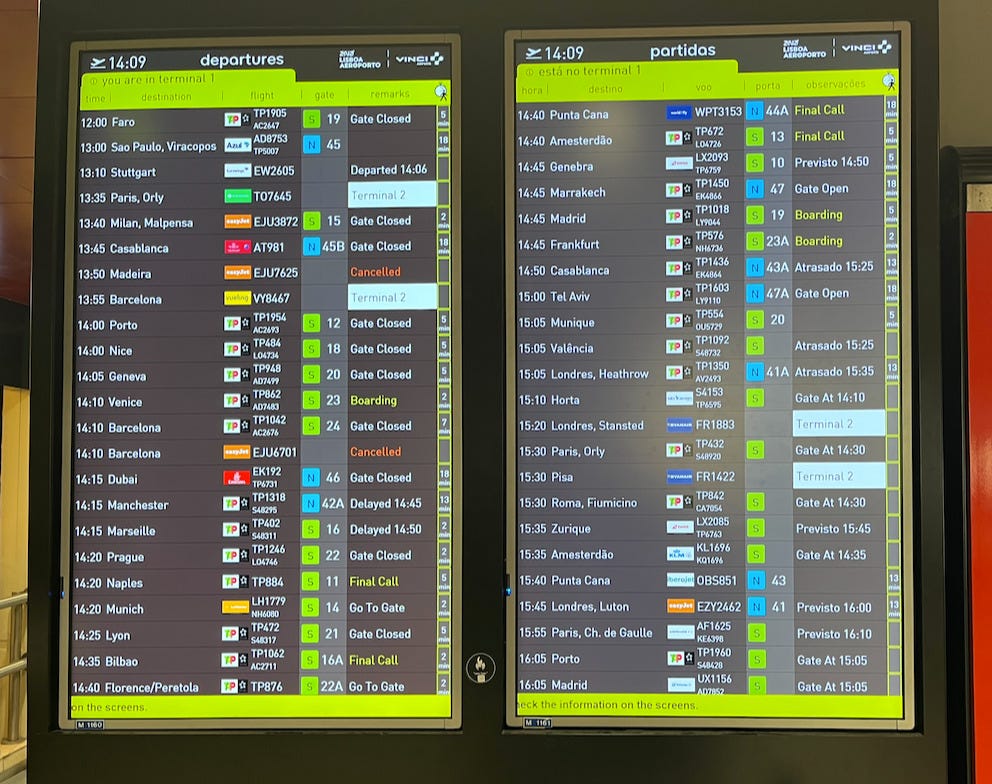Fate and Fictus
How fate drove me to emphasise difference like a child; and a sketchy encounter under a Fictus tree.
Fate: Lisbon and Cascais
My study visit to Lisbon at the end of March was simply fantastic. I had lots of fun creating art in response to the atmosphere of the place. The event was part of my degree studies, with 9 other students and 2 tutors. Each of us had a provocation for the week and mine was simply ‘EMPHASISE DIFFERENCE’. Fate set her hand in motion on the very first day when I lost my prepared sketchbook: the one with all those lovely blank white A3 pages.
Sensing a strange opportunity to engage with ideas of difference, I bought a children’s book, and set about being a child again. I painted and sketched and made notes on the printed pages in such a way that the words and pictures sometimes show through - adding to the story, creating a simple childlike depth to the painted textures.
"It took me four years to paint like Raphael, but a lifetime to paint like a child" (Picasso)
The sketchbook is a simple artefact of my visit, holding so many memories of the landscape and place. As you come to understand more about my work, you’ll see how I embrace the performative elements of the making process, and you’ll get a sense of this in my sketchbook video (it’s only 6 minutes) - I hope you’ll take a look when you have a quiet moment.
Fictus: A sketchy encounter
For the Lisbon trip, I took along with me Alain de Botton’s book titled The Art of Travel [1]. De Botton offers some great insights about why we desire to travel to far flung places, and explores how impersonal places we encounter (e.g. airports, service stations, train stations) affect us in our journey. It was a lovely travelling companion as I went through exactly these places, travelling from Sanremo to Cascais, via the airports of Nice and Lisbon. De Botton writes (p. 39):
“Nowhere is the appeal of the airport more concentrated than in the television screens which hang in rows from terminal ceilings announcing the departure and arrival of flights and whose absence of aesthetic self-consciousness, whose workman-like casing and pedestrian typefaces, do nothing to disguise their emotional charge or imaginative allure. Tokyo, Amsterdam, Istanbul, Warsaw, Seattle, Rio.” [...]
“The constant calls of the screens. Some accompanied by the impatient pulsing of a cursor, suggests with what ease our seemingly entrenched lives might be altered, were we walk down a corridor and onto a craft that in a few hours would land us in a place of which we had no memories and where no one knew our names. How pleasant to hold in mind, through the crevices of our moods, at three in the afternoon when lassitude and despair threaten, that there is always a plane taking off for somewhere …” [1]
Now I’m home, and reaching the end of the book, I came across this nugget of wisdom (pp 222-223):
"It is a measure of how accustomed we are to inattention that we would be thought unusual and perhaps dangerous if we stopped and stared at a place for as long as a sketcher would require to draw it. Ten minutes of acute concentration at least are needed to draw a tree; the prettiest tree rarely stops passers-by for longer than a minute" [1]
It reminds me of an encounter I had while drawing a grand Fictus tree, here in Sanremo. You can see from the drawing that I’m abstracting some particularly complex elements of its form. I had settled myself against some railing, and fixed my position, which was important since changing my position would make it difficult to render a faithful representation.
So, half way through building up my drawing, I sense a car coming into the park area. I’m not sure if I heard it first, or felt it: it just roared into existence like a TARDIS, there, in front of me, the bumper just inches from my legs. With doors flying open, two rather frightening women heaved themselves out, shouting and gesticulating at each other. But, and here’s the thing, I could no longer see the lower part of the tree - instead I had the view of a somewhat shabby grey beaten-up old Audi. Fearing for my life, I said loudly to the driver, “Signora ?” and pointed to my drawing. Not hearing me, I repeated my plea, and she looked around and stopped. “Cosa?” Now I was done for - I’d interjected in their heated debate, and I now had only 30 seconds to live. “ahhh … your car is in the way … um … um … I’m trying to draw this tree”. She turned on her heels, she’s coming for me, arm outstretched, she grabs my sketchpad, and pronounces with a flourish “Che bello!” Well, realising I might have a reprieve on my death sentence, I explain through nervous gestures how the presence of her beautiful Audi was not really adding to the composition. Like a lightening-bolt she’s in the car, engine revving, pistons screaming blue murder, and it’s relocated (TARDIS like) 6 feet to my right. Excellent, I thought, now I can see the tree again, I can bathe in the warmth of the tired engine, and … I’m still alive ...
About me
Yay … I’m still alive! My name is David Bell and I’m an artist living in Sanremo, Italy. I write this blog for my band of supporters, giving an insight to my art and life generally living on the beautiful Riviera of Flowers.
Ciao4now … alla prossima.
References
[1] De Botton, A. (2002). The Art of Travel. Penguin Books.







Oh thank goodness I was worried that article would end very differently....lol